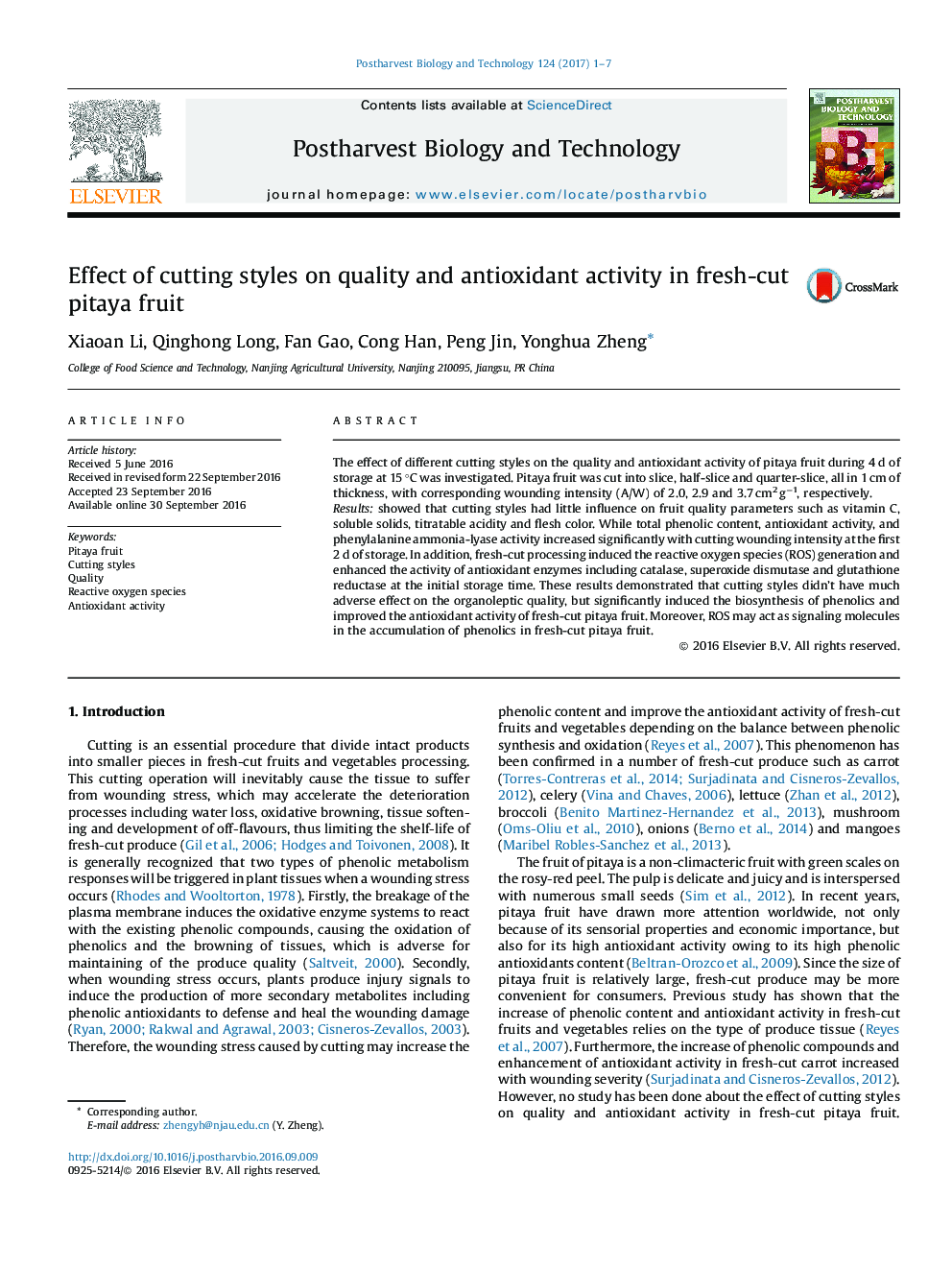| Article ID | Journal | Published Year | Pages | File Type |
|---|---|---|---|---|
| 4517650 | Postharvest Biology and Technology | 2017 | 7 Pages |
•Cutting styles did not have adverse effect on the organoleptic quality.•Cutting significantly enhanced TP content, antioxidant enzyme activity and AOX.•The enhancement of TP content and AOX increased with cutting wound intensity.
The effect of different cutting styles on the quality and antioxidant activity of pitaya fruit during 4 d of storage at 15 °C was investigated. Pitaya fruit was cut into slice, half-slice and quarter-slice, all in 1 cm of thickness, with corresponding wounding intensity (A/W) of 2.0, 2.9 and 3.7 cm2 g−1, respectively.Resultsshowed that cutting styles had little influence on fruit quality parameters such as vitamin C, soluble solids, titratable acidity and flesh color. While total phenolic content, antioxidant activity, and phenylalanine ammonia-lyase activity increased significantly with cutting wounding intensity at the first 2 d of storage. In addition, fresh-cut processing induced the reactive oxygen species (ROS) generation and enhanced the activity of antioxidant enzymes including catalase, superoxide dismutase and glutathione reductase at the initial storage time. These results demonstrated that cutting styles didn’t have much adverse effect on the organoleptic quality, but significantly induced the biosynthesis of phenolics and improved the antioxidant activity of fresh-cut pitaya fruit. Moreover, ROS may act as signaling molecules in the accumulation of phenolics in fresh-cut pitaya fruit.
